A servo motor is an engine that controls the operation of a mechanical component in a servo system, and is an auxiliary motor indirect transmission. The servo motor can control the speed and position accuracy very accurately, and can convert the voltage signal into torque and speed to drive the control object. The servo motor rotor speed is controlled by the input signal and can react quickly. It is used as an actuator in the automatic control system, and has the characteristics of small electromechanical time constant, high linearity, and starting voltage, which can receive the received electrical signal. Converted to an angular displacement or angular velocity output on the motor shaft. Divided into two major categories of DC and AC servo motor, its main feature is that when the signal voltage is zero, there is no rotation phenomenon, and the rotation speed decreases uniformly with the increase of torque.
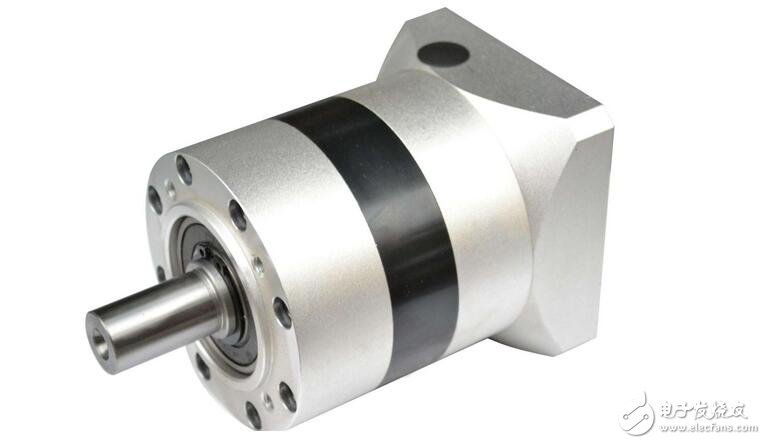
DC brushless servo motor features
The moment of inertia is small, the starting voltage is low, and the no-load current is small. The contact type reversing system is discarded, the motor speed is greatly increased, and the maximum speed is up to 100 000 rpm. When the servo motor is executed, the brushless servo motor can realize the speed and position without the encoder. Control of torque, etc.; There is no brush wear, except for high speed, long life, low noise, no electromagnetic interference.
DC brushed servo motor features
1. Small size, quick response, fast overload, wide speed range
2. Low speed torque, small fluctuation, stable operation
3. Low noise, high efficiency
4. Back-end encoder feedback (optional) constitutes the advantages of DC servo
5. Large variable voltage range, adjustable frequency
Advantages of servo motors
First, let's look at the advantages of servo motors compared to other motors (such as stepper motors):
1. Accuracy: realizes closed-loop control of position, speed and torque; overcomes the problem of stepping motor out of step;
2, the speed: high-speed performance is good, the general rated speed can reach 2000 ~ 3000 rpm;
3. Adaptability: It has strong anti-overload capability and can withstand three times the rated torque. It is especially suitable for occasions with transient load fluctuations and quick start.
4. Stable: It runs smoothly at low speed, and does not produce stepping operation similar to stepper motor when running at low speed. Suitable for occasions with high speed response requirements;
5. Timeliness: The dynamics of motor acceleration and deceleration are short, generally within tens of milliseconds;
6, comfort: heat and noise are significantly reduced.
To put it simply: the ordinary motor that you usually see, after power off, it will turn for another moment because of its own inertia, and then stop. The servo motor and the stepper motor stop and stop, and walk away, the reaction is extremely fast. However, stepper motors have lost synchronization.
There are too many applications for servo motors. As long as there is a power source, and the accuracy requirements are generally involved in the servo motor. Such as machine tools, printing equipment, packaging equipment, textile equipment, laser processing equipment, robots, automated production lines and other equipment that require relatively high process precision, processing efficiency and operational reliability.
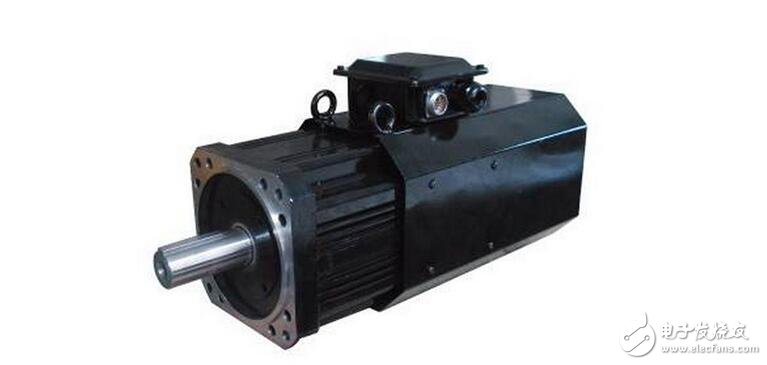
Servo motors are divided into two major categories: DC and AC. DC motors are divided into two types: brushed and brushless. AC motors can be divided into asynchronous and synchronous.
The brush motor has low cost, simple structure, large starting torque, wide speed regulation range, easy control, maintenance, but inconvenient maintenance (replacement of carbon brushes), electromagnetic interference, and environmental requirements. It can therefore be used in cost-sensitive general industrial and residential applications.
The brushless motor is small in size, light in weight, large in output, fast in response, high in speed, small in inertia, smooth in rotation and stable in torque. The control is complex, and it is easy to realize intelligence. The electronic commutation mode is flexible, and can be square wave commutation or sine wave commutation. The motor is maintenance-free, has high efficiency, low operating temperature, low electromagnetic radiation and long life, and can be used in various environments.
AC servo motors are also brushless motors, which are divided into synchronous and asynchronous motors. At present, synchronous motors are generally used in motion control. It has a large power range and can achieve a large power. High inertia, the highest rotational speed is low, and it decreases rapidly as power increases. Therefore, it is suitable for applications with low speed and smooth operation.
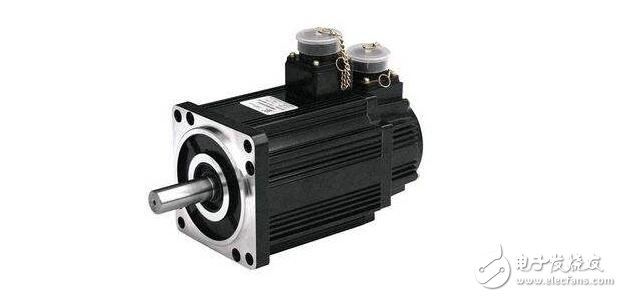
Servo motor: It is an engine that controls the operation of mechanical components in the servo system. It is an auxiliary motor indirect transmission. The servo motor is an electro-mechanical converter that can rotate continuously. As the servo motor of the hydraulic valve controller, it belongs to the micro-motor with low power. The permanent magnet DC servo motor and the parallel DC servo motor are the most commonly used.
The role of the servo motor: The servo motor can control the speed and position accuracy is very accurate.
Classification of servo motors: DC servo motors and AC servo motors.
The output speed of the DC servo motor is proportional to the input voltage and can achieve forward and reverse speed control. The utility model has the advantages of large starting torque, wide speed regulation range, good linearity of mechanical characteristics and adjustment characteristics, convenient control, and the like, but the wear of the reversing brush and the easy generation of sparks may affect the service life thereof. The brushless DC servo motor that has appeared in recent years avoids brush friction and commutation interference, so the sensitivity is high, the dead zone is small, the noise is low, the life is long, and the interference to surrounding electronic devices is small.
The transfer function of the output speed/input voltage of the DC servo motor can be approximated as a first-order late link, and its electromechanical time constant is generally between about ten milliseconds and several tens of milliseconds. Some low inertia DC servo motors (such as hollow cup rotor type, printed winding type, and slotless type) have a time constant of only a few milliseconds to twenty milliseconds.
The rated speed of DC servo motors with low power specifications is above 3000r/min, even greater than 10000r/min. Therefore, as a controller of the hydraulic valve, a high speed ratio reducer is required. The DC torque servo motor (ie low-speed DC servo motor) can work at low speeds of tens of revolutions per minute, even under long-term stall conditions, so it can directly drive the controlled without deceleration.
DC servo motors are divided into brushed and brushless motors.
The brush motor has low cost, simple structure, large starting torque, wide speed regulation range, easy control and maintenance, but convenient maintenance (replacement of carbon brushes), electromagnetic interference, and environmental requirements. It can therefore be used in cost-sensitive general industrial and residential applications.
The brushless motor is small in size, light in weight, large in output, fast in response, high in speed, small in inertia, smooth in rotation and stable in torque. The control is complex, and it is easy to realize intelligence. The electronic commutation mode is flexible, and can be square wave commutation or sine wave commutation. The motor is maintenance-free, has high efficiency, low operating temperature, low electromagnetic radiation and long life, and can be used in various environments.
AC servo motors are also brushless motors, which are divided into synchronous and asynchronous motors. At present, synchronous motors are generally used in motion control. It has a large power range and can achieve a large power. High inertia, the highest rotational speed is low, and it decreases rapidly as power increases. Therefore, it is suitable for applications with low speed and smooth operation.
How AC servo motors work
The rotor inside the servo motor is a permanent magnet. The U/V/W three-phase electric motor controlled by the driver forms an electromagnetic field. The rotor rotates under the action of the magnetic field. At the same time, the encoder feedback signal from the motor is supplied to the driver. The driver according to the feedback value and target. The values ​​are compared to adjust the angle at which the rotor rotates. The accuracy of the servo motor is determined by the accuracy (number of lines) of the encoder.
What is the difference in function between AC servo motor and brushless DC servo motor?
The AC servo is better because it is sinusoidal and the torque ripple is small. The DC servo is a trapezoidal wave. But DC servo is simpler and cheaper.
Permanent magnet AC servo motor
Since the 1980s, with the development of integrated circuits, power electronics technology and AC variable speed drive technology, permanent magnet AC servo drive technology has developed prominently. Famous electric manufacturers from all over the world have successively launched their own AC servo motor and servo drive series. The product is constantly being refined and updated. AC servo system has become the main development direction of modern high-performance servo system, which makes the original DC servo face the crisis of being eliminated. After the 1990s, the AC servo system that has been commercialized in various countries around the world is a sinusoidal motor servo drive with full digital control. The development of AC servo drives in the field of transmission is changing with each passing day. Compared with DC servo motors, permanent magnet AC servo motors have the following main advantages:
(1) There are no brushes and commutators, so the work is reliable and the maintenance and maintenance requirements are low.
(2) The stator winding heat dissipation is convenient.
(3) The inertia is small, which is easy to improve the rapidity of the system.
(4) Adapted to high speed and large torque working conditions.
(5) Smaller volume and weight at the same power.
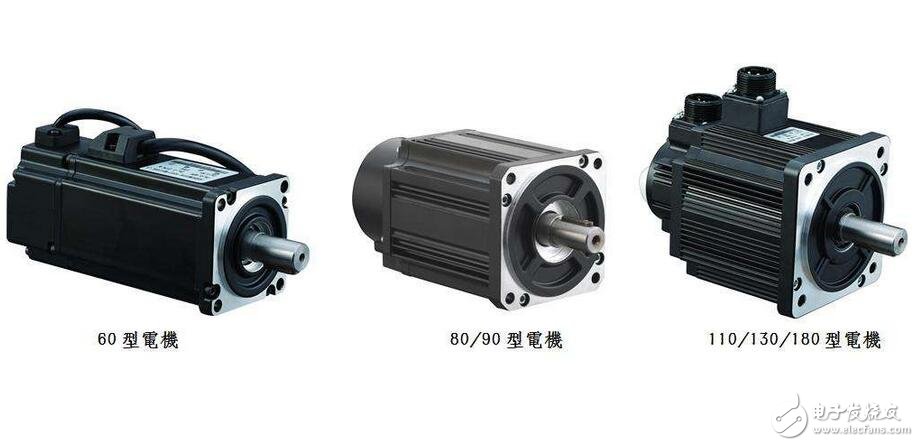
Application of servo amplifiers and cars
You will get a better understanding and servo amplifier operation if you see some typical applications. Figure 11-90 shows an example news feed controlled by a motor. In this sheet application is a journalist fed in where it is cut to length with a knife blade or pure. Sheets can have a logo or other advertisement and must be queued for the demarcation point of the registration number. The sheet at the speed and slope position of this application must be synchronized to the correct cut point. The feedback sensor can be coded or the resolver is a photometric sensor plus a registration mark to determine the location. Operators provide panels that allow operators to jog the system when maintaining the blade, or when loading a newly launched material. The operator panel can also be used to call parameters, drives, and corona, to address the use of each type of material. The system can also be integrated with programmable controllers or other types of controllers and operator panels that can be used to select the correct critical point for each type of material or product to run.
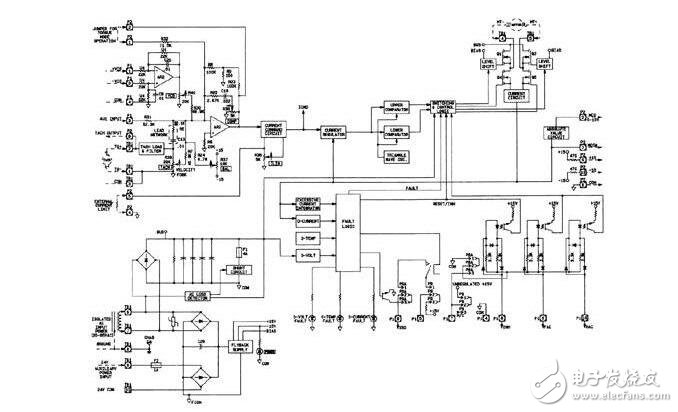
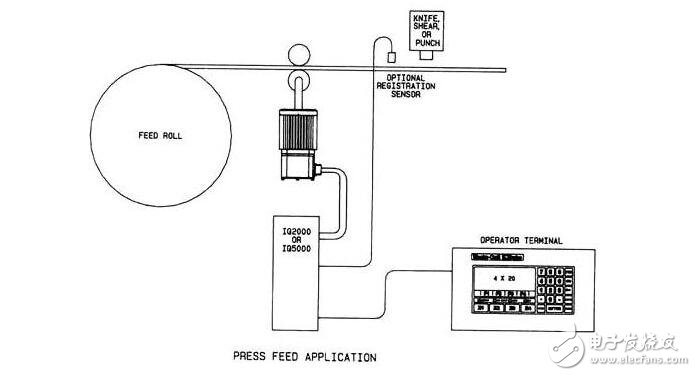
Servo control line bottle filling application
The second application is shown in the figure. In this application multiple filling head lines with bottles as they follow the constant line. Each filling head must match a bottle, the bottle track, and it is facing. The product is used as a nozzle and bottle for moving. In this application 10 nozzles mounted on a carriage are driven by a ball screw mechanism. The ball screw mechanism is also called the screw. When the motor rotates the shaft ball screw, the carriage will move the ball screw shaft along the lateral length. This movement will be smooth so that each nozzle can be contaminated with no oil from the bottle of the pense product.
The servo drive system uses software that positions the drive controller to move the bottle through the conveyor line where the position and speed are tracked. The main encoder tracks the bottles as they move along the conveyor line. A spiral feed system also uses the previous level bottle to enter the gas station. The spiral leads to a specific amount of space between the regulations, and each bottle enters the gas station. The bottles can be fitted tightly to their practice spirals, but they pass through the spiral and their space is exactly the same, so that the neck of the bottle will conform to the filling nozzle of the birth spacing. The detector also incorporates a dispensing system to ensure that no product is dispensed from the nozzle a bottle if missing or large bottles appear between the spaces.
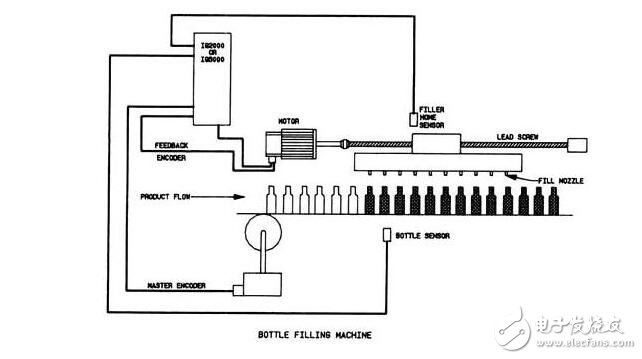
Application of graphical beverages, servo motors controlled by gas stations
The servo drive system compares the position of the bottle from the main encoder to the feedback signal, indicating the position to fill the ball screw for transport installation. The servo drive amplifier will increase or decrease the speed of the ball screw mechanism so that the nozzle will match the speed of the bottle to the end.
Servo control precision spiral filling system
The third application servo system provides a map. In this one large application fill tanks are used to fill their containers along the conveyor line. The material is a dispensing container that can be a single material supplement, or it can be a few teammates, and the Rial adds a container that is poured into the mixer for mixing operations. Due to the amount of material that is dispensed into the container must be accurately measured and measured in the box, a spiral is used by the control servo system. Feedback sensor, this system can be a weighing system. The command signal can come from a programmable controller or the operator can manually select a recipe from the operator's terminal here. The amount of MA material can be reciped from different recipes.
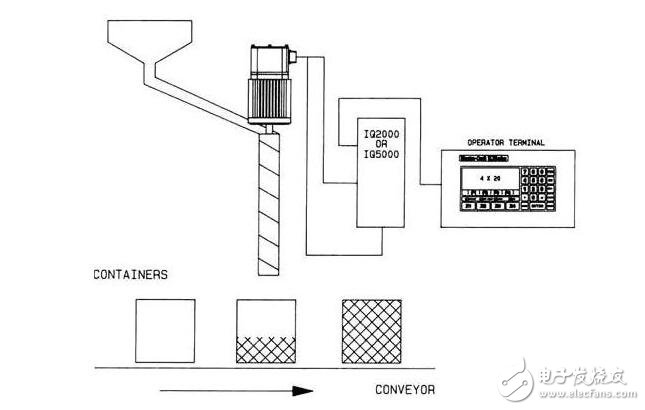
The graph application is a precise spiral gas station controlled servo motor. The speed screw can be adjusted so that when it is running at high speed, the negotiated tainer will be filled first, and the speed can be slowed down a bit at the last gram of material that can accurately measure the container to fill the appropriate point. Due to the rising price of materials, precision filling equipment can provide savings as well as the amount of quality used in product formulations.
Application servo used by the tag
The fourth application's servo-controlled speed tag feed mechanism, pull-up pre-tags were sung and applied to the past marking mechanism for packaging mobile continuous delivery systems. The feedback signal is provided by an encoder that displays the position of the conveyor belt, the ring generator, the speed of the display, and a sensor that displays the registration number on each label. The servo positioning system is provided by a microprocessor that specifies the error signal, servo amplifier, and power signal provided by the servo motor. This application diagram is shown. 11-93.
Random timing control system consists of a servo
Fifth, submit an application map. Shows a range of packaging equipment that can be used as three separate machines. The packaging system for each station of the time period is independent of others. The packaging system includes a material conveyor, transport positioning and packaging station. The material transport and packaging machinery stations are connected so that they run at the same speed. The packaging station of the stand package must be strictly controlled so that the package does not become too close to each other. A piece of metal called fly negotiates the specific point of the nected packaging conveyor station to ensure that each package stays in place. The sensor is installed at the beginning of the year, and when it is determined to transport the leading edge package, it starts to go on the positioning conveyance. The second sensor is the conveyor belt package inspection flight at the bottom. The signals of these two signals are transmitted to the motor, providing information so that the servo can be adjusted to the speed of the positioning and delivery, so that each package endorses one of the flight actions as it is packaged on the conveyor belt. This application shows that the servo positioning controller is capable of handling a variety of different signals from multiple sensors because the controller uses a microprocessor.
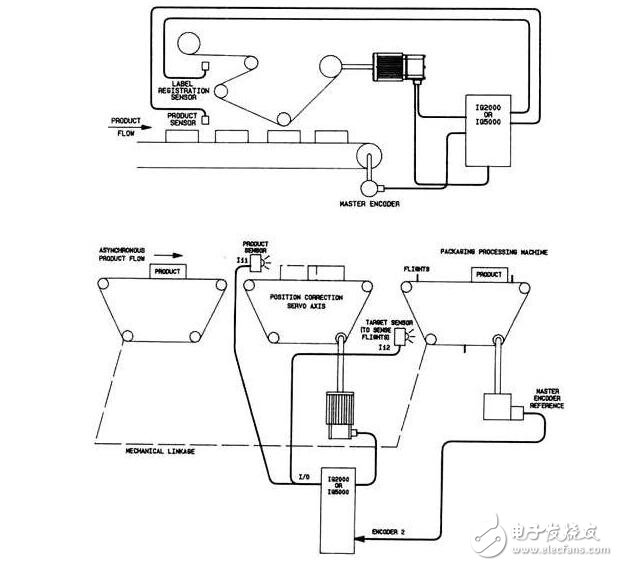
Linear Stepper Motor,Linear Actuator Motor,Nema Stepper Motor,Linear Drive Motor
Changzhou Sherry International Trading Co., Ltd. , https://www.sherry-motor.com